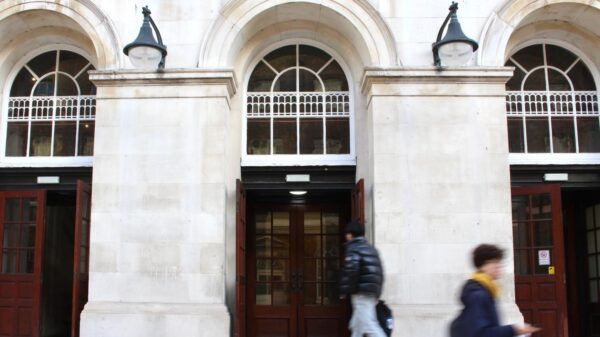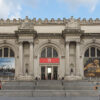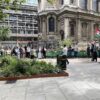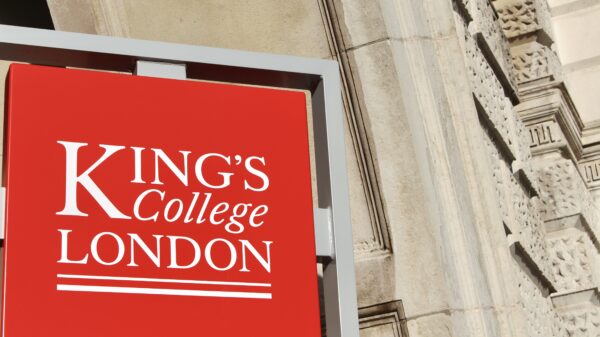King’s physicists were invited to showcase their work last week at the prestigious Royal Society Summer Science Exhibition. Roar News had the chance to chat with them during the event.
Views of the #SummerScience Exhibition at @theroyalsociety. It's been amazing to show our research 🔬 to people from all walks of life and all ages 👨👩👧👦👩🏻🦰🧔🏿👵🏻👶🏾 We'll be here all weekend – come visit! https://t.co/Q64tG7NejH
— KCL Physics (@KCL_Physics) July 5, 2024
-Emilio
Video by @alastovko@QuantumWorkshop @AttoKings pic.twitter.com/bxRyGMAkXB
From 2-7 July 2024, scientists from King’s College London’s (KCL) Natural and Mathematical Sciences (NMES) department showcased their pioneering research at the Royal Society Summer Science Exhibition. Drs. James Millen, Margarita Khokhlova, Emilio Pisanty, alongside post-graduate researchers and graduate students, demonstrated the fascinating properties of light and its interaction with matter, as well as innovative applications of levitation technology.
Our lives are flooded with light, but its wonders are more amazing than you could imagine. See levitating nano-particles captured in electrical fields and other marvels as researchers from @KCL_Physics bring the unseen wonder of light to #SummerScience: https://t.co/yp8yWWC2dj
— The Royal Society (@royalsociety) June 27, 2024
This event, held annually in London, has been a platform for groundbreaking scientific discoveries since 1778, and this year was no exception, garnering over 13,000 attendees ranging from schoolchildren and members to the general public, to notable academics.
Photonics and Optical Chirality
One of the key projects presented at the exhibition was led by Dr. Margarita Khokhlova. This research delves into the complex interactions between light and matter, specifically focusing on optical chirality and polarization. Optical chirality refers to the “handedness” of light, which can be either right-handed or left-handed, much like human hands. This property is crucial in studying molecular interactions, as molecules themselves can also be chiral.
Traditionally, the interaction between light and molecules has been limited by the size mismatch; light wavelengths are much larger than the molecules they interact with, resulting in a weak chiral interaction. Dr. Khokhlova’s research aims to overcome this limitation by generating light that is chiral not just in space, but in time. By combining different colours of light to create a three-dimensional chiral pattern, they can enhance the interaction between light and chiral molecules. This technique could revolutionize fields like organic chemistry and pharmacology, where the chirality of molecules can significantly impact their function.
“If you take a compound and you add right-handed molecules to it, it can become a useful solution to combat morning sickness in pregnancy; if you use left-handed molecules, however, that can result in deformities in the fetus,” explained Dr. Pisanty, “A less ‘dark’ example is a different solution with a right-handed molecule produces a lemon scent, but using a left-handed molecule produces an orange scent instead – which we can all agree is much nicer,” he added with a smile.
Optical and Electric Levitation
Another captivating demonstration at the exhibition was the work on levitation by Dr. James Millen and his team. This project involves using optical and electric traps to levitate particles. Optical levitation uses powerful laser beams to trap particles at the focal point of the light, creating a stable levitation effect. These optical traps, also known as optical tweezers, were a breakthrough that earned the Nobel Prize in 2018.
Electric levitation, on the other hand, uses electrostatic forces to suspend particles in mid-air. By applying alternating voltages to electrodes, the team creates a rapidly changing attractive and repulsive force that holds the particles in place. This technology (called a Paul Trap) is not just for show; it has practical applications in sensing and detecting minute forces, which is crucial in fields like dark matter research and fundamental physics.
Levitated particles, which float freely in space without physical attachment, exhibit remarkable sensitivity to tiny forces and torques. This makes them exceptionally useful for sensing applications. For example, in the search for dark matter, scientists can utilize a grid array of these levitated particles to detect the subtle interactions that occur when dark matter particles pass through them. By meticulously tracking the movements of these particles, researchers can identify and measure the impact of dark matter, providing valuable insights into one of the universe’s greatest mysteries.
Beyond dark matter detection, levitation technology is pivotal in probing fundamental physics, particularly quantum mechanics. These levitated systems can be prepared in quantum states, where particles exist in superpositions, doing two things at once. Because they are so isolated from their environment, these systems maintain their quantum states longer, allowing for more precise experiments. By studying how these states interact with environmental factors, such as gas molecules or photons, researchers can better understand the transition from quantum to classical physics. This knowledge could lead to advances in quantum computing and other technologies that harness the principles of quantum mechanics.
Real-World Applications and Future Prospects
The applications of these technologies are vast. The enhanced interaction between chiral light and molecules could lead to the development of sensitive tools for identifying molecular chirality with high precision, benefiting organic chemists and biologists. For instance, this could allow for faster and more accurate identification of the chirality of pharmaceutical compounds, ensuring their efficacy and safety.
Levitation technology, particularly optical tweezers, is already being used in biological and medical research to manipulate cells and other small particles without physical contact. The ability to detect tiny forces makes these systems ideal for studying fundamental physics, such as probing the boundary between quantum and classical physics. In space, where gravity is weaker, these levitation techniques could be even more effective, enabling new types of experiments and discoveries.
Engaging the Public with Science
The KCL team’s participation in the Royal Society Summer Science Exhibition was not just about showcasing their scientific prowess, but also about engaging the public with the wonders of science. Interactive demonstrations allowed visitors to see levitated particles and colourful patterns created by chiral light interactions. These visual and hands-on experiences help demystify complex scientific concepts, making them accessible to people of all ages and backgrounds.
A King’s Undergraduate Research Fellowship (KURF) recipient working with the team shared her experience, saying: “I really liked interacting with the public – these activities are how you get to really connect the people to the science. It’s also really nice to see the amount of young children, especially girls coming up and chatting with me. It’s really rewarding to have that power to influence a whole new generation of Women in STEM”.
The work exhibited by KCL scientists at the Royal Society Summer Science Exhibition exemplifies the transformative potential of photonics and levitation technologies. By pushing the boundaries of how light interacts with matter, these researchers are opening new frontiers in science and technology, promising exciting advancements in various fields.



























